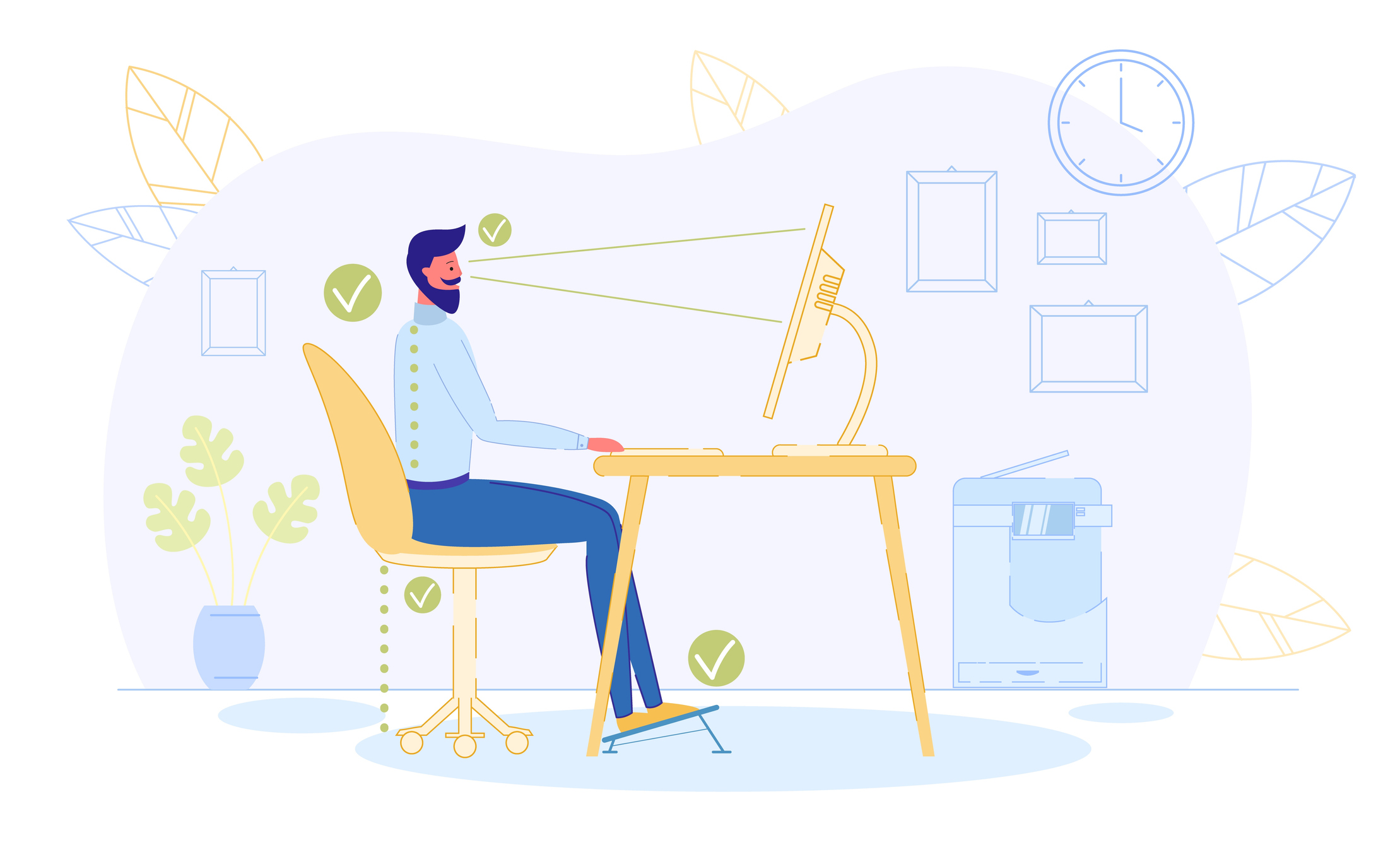
16 Feb Are you sitting pretty? Why ergonomics is essential to every workspace
However you work, whether from home on the kitchen table or from a bespoke desk in an office building, it’s important your workspace is comfortable, safe, and productive. Ergonomics is therefore essential.
Ergonomics is a science that designs tools and environments for users to maximise efficiency, comfort, and safety. For desk-based workers, an ergonomically designed workspace can increase productivity and reduce discomfort. It is more than just buying the best chair or desk on the market. It also requires education on how to avoid hazards and use the furniture, environment, software, and hardware that form your daily working space effectively.
It’s tempting to dismiss an uncomfortable chair or cramped desk as nothing more than an irritation, but by taking a little time to look at your current set up with fresh eyes, you could avoid a host of injuries and disorders caused by poor ergonomics. These can include musculoskeletal disorders such as carpal tunnel syndrome or tendonitis, along with back problems, headaches, stiff neck, and eye strain to name a few.
Read on for our simple checks to make sure your workspace is ergonomically efficient…
Chair
A good ergonomic chair will have lumbar support and allow you to adjust: the height and pan depth of the seat; the height of the armrests; and the tilt of the angle between the back of the chair and the seat.
- Adjust the height of your chair so that both your feet rest flat on the floor and your thighs are parallel to the floor.
- If your chair is too high to enable you to do this — or the height of your desk requires you to raise the height of your chair — use a footrest or improvise with a small stool or stack of strong books instead.
- Avoid crossing your legs to allow correct blood circulation.
- If you have them, adjust the armrests so your arms gently rest on them and are parallel to the floor, with your shoulders relaxed.
- Sit up straight and avoid slouching and keep your neck in a relaxed and neutral position.
Desk
Whether you have a dedicated ‘desk’ or are using a surface that doubles up as the dining room table at other times during the day, the principles of ergonomics remain the same.
- Make sure there’s clearance for your knees, thighs, and feet; avoid storing items under your desk.
- If the desk is too low and can’t be adjusted, place sturdy books or blocks under the desk legs. If the desk is too high and can’t be adjusted, raise your chair safely.
- If your desk has a hard edge, pad the edge, or use a wrist rest.
Monitor
- The monitor or screen of your computer should be positioned about an arm’s length away and directly in front of you.
- The top of the monitor should be at or slightly below eye level. Your eyes should ideally look slightly downward when viewing the middle of the screen.
- If you are working from a laptop, a specialist stand or riser with a separate keyboard can help achieve this.
- Position your monitor so that the brightest light source is to the side and avoid reflected glare on the screen. Close curtains or blinds and adjust overhead lighting if possible, to achieve this.
Keyboard and mouse
- Make sure your mouse is within easy reach and on the same surface and level as your keyboard.
- Position both directly in front of you and as central as possible to your body but leave enough room to support your wrists.
- Whether you’re using your mouse or your keyboard, keep your wrists straight, your upper arms close to your body, and your hands at or slightly below the level of your elbows.
- Use keyboard shortcuts to reduce the frequency of having to use your mouse.
- Keep other key objects such as phones, stationary or paperwork within easy reach and close to your body. If you do need something that you cannot comfortably reach when sitting, stand up to reach it.
Connectivity when working
- A typical working day nowadays invariably means spending a lot of time online and talking to others. Try to avoid long periods cradling a handset between your neck and chin. Use either a headset or put your telephone on ‘speaker’ mode leaving both your hands free.
- Utilise specialist collaborative software such as Microsoft Teams to reduce having to switch and reach between multiple applications and equipment.
Adjust and review regularly
If you drive someone else’s car, you typically adjust the seat position and mirrors before driving off, if you try on a new pair of shoes you adjust the laces and tongue to check they comfortably fit. The same principle applies to your workspace ergonomics.
You might have originally compromised on comfort and practicality in your current set up – thinking it was temporary or short term – so now is the time to get it right. Regularly run through our simple ergonomic checklist when sat at your workstation to both protect your own health and wellbeing and maximise the productivity of each working day.
Here at Transpeed, we provide companies with the systems and IT management they need to succeed. If you need any advice regarding your workstation requirements – please get in touch to hear how we can help.


Sorry, the comment form is closed at this time.